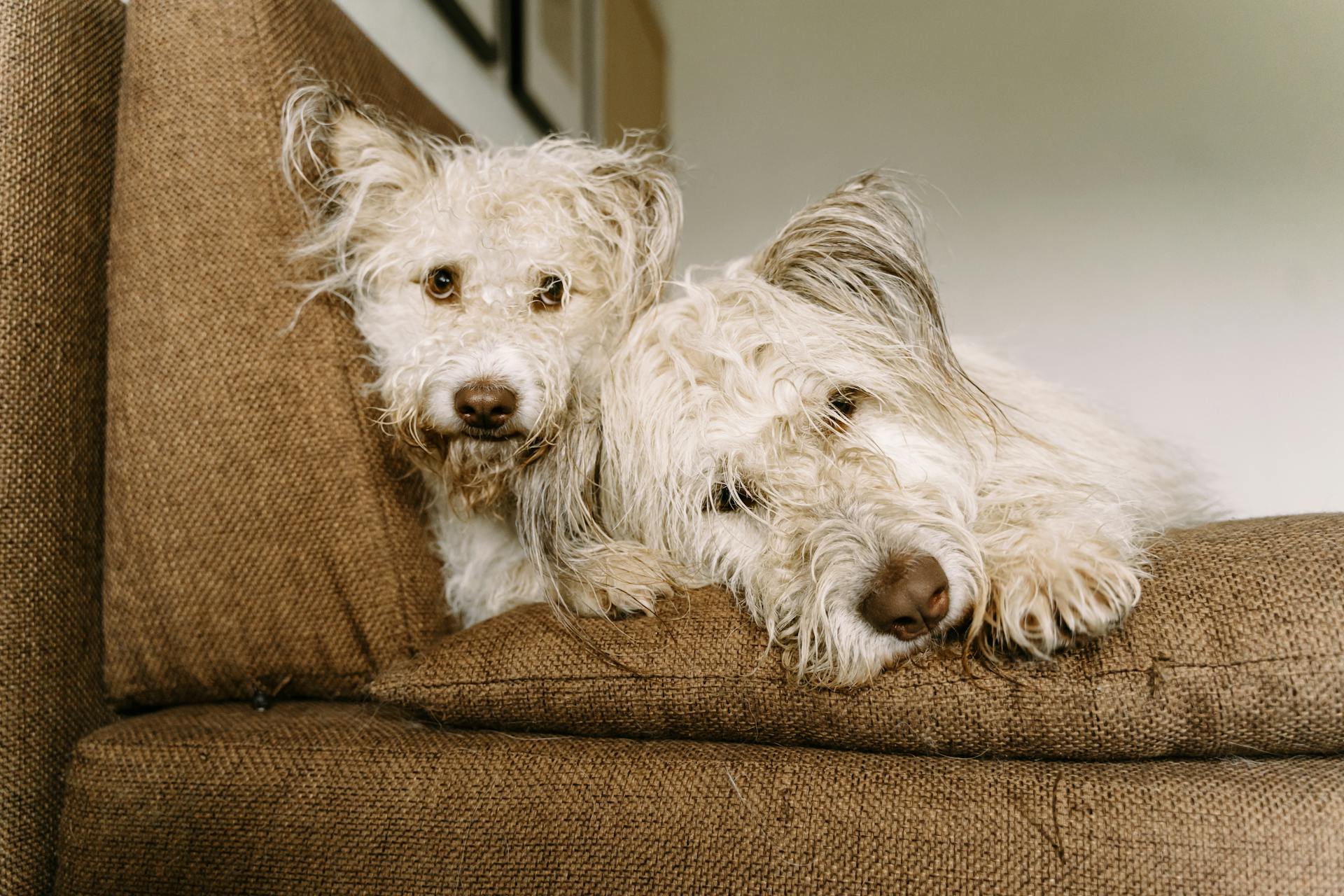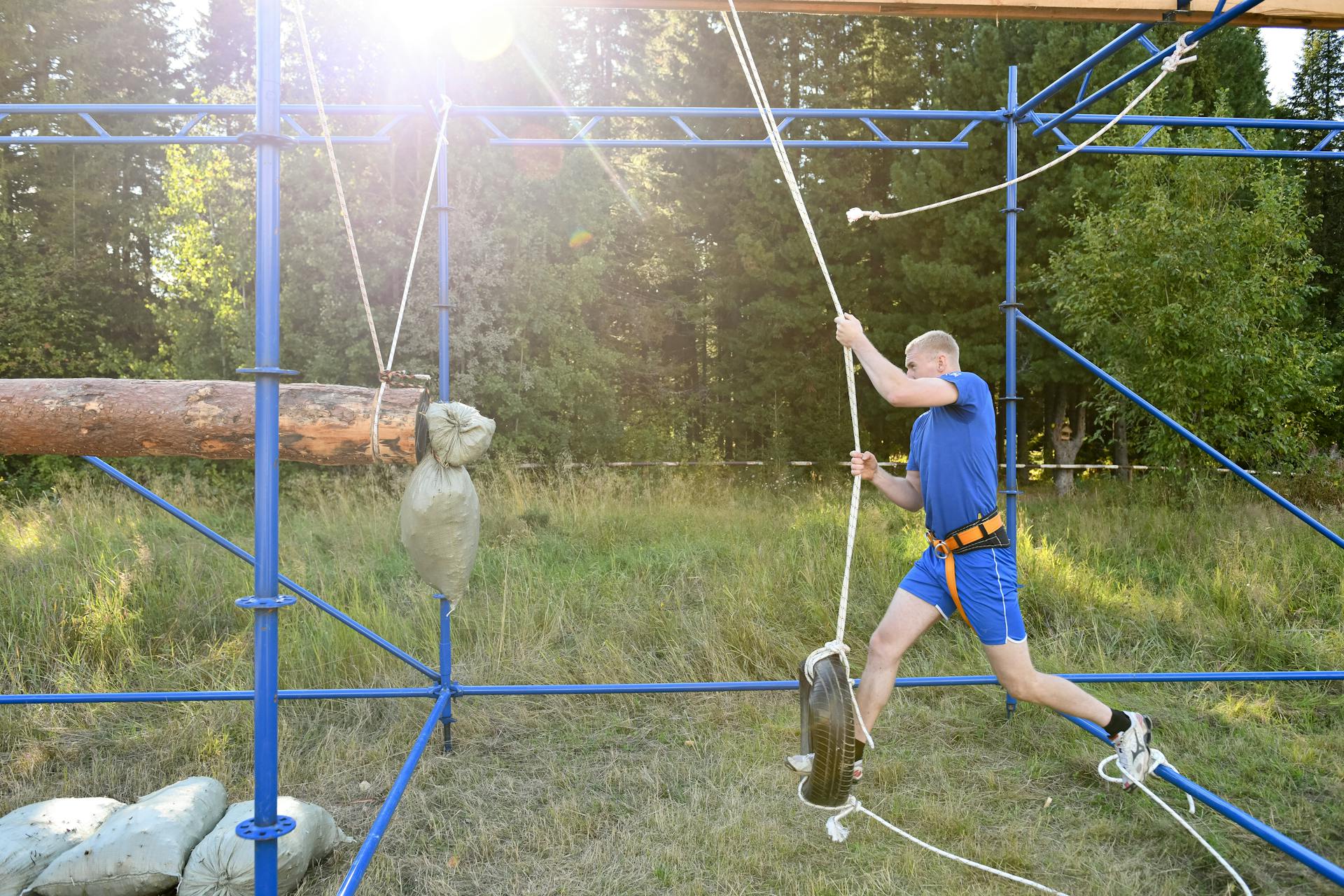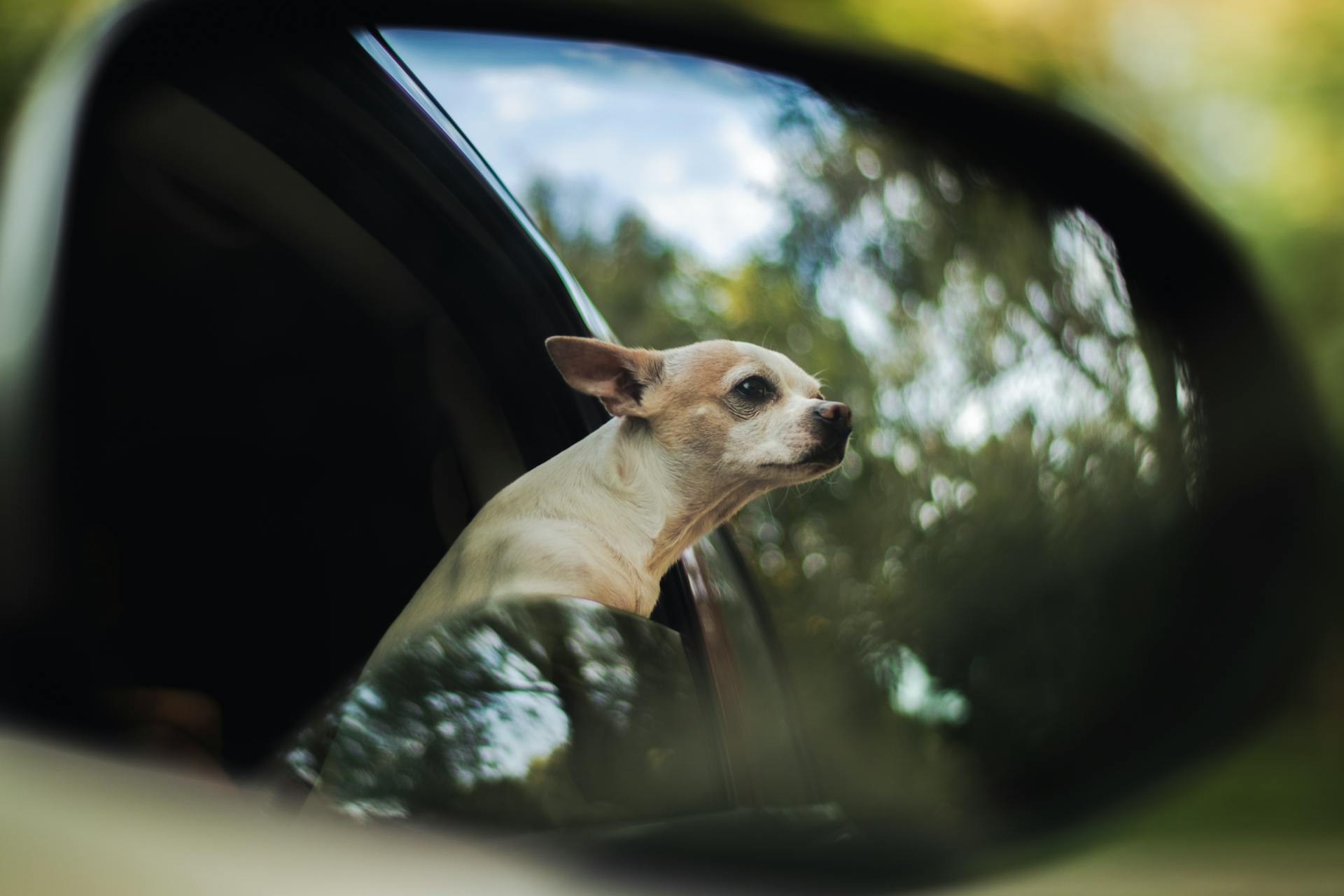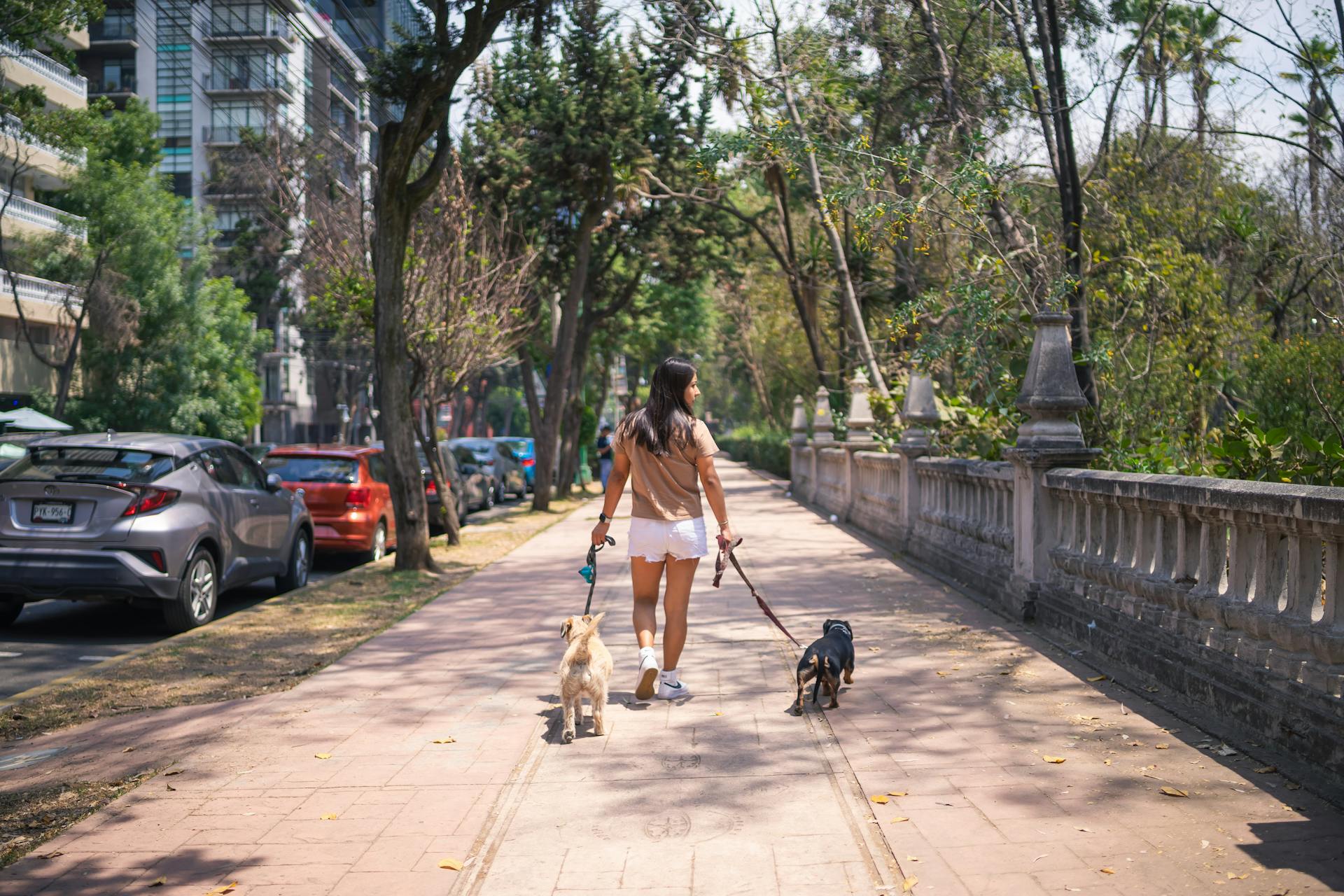
Separation anxiety in dogs is a serious issue that can have devastating consequences. According to research, up to 20% of dogs suffer from separation anxiety, which can lead to destructive behavior and even death.
Dogs with separation anxiety often exhibit distress behaviors such as pacing, panting, and howling. These behaviors can be a sign that your dog is experiencing extreme anxiety and may need immediate attention.
The physical symptoms of separation anxiety in dogs can be just as alarming as the behavioral ones. In extreme cases, dogs can experience rapid heartbeat, increased salivation, and even seizures.
What Is Separation Anxiety?
Separation anxiety is a serious issue that can cause distress for both dogs and their owners.
Dogs with separation-related behavior problems engage in unwanted behavior such as destruction of property and excessive vocalization when left alone.
Male dogs are more likely to develop separation-related behavior problems.
Dogs sourced from shelters or found, and separated from their litter before they are 60 days old, are also more likely to develop separation anxiety.
Consider reading: Healthy Mind Canine - Separation Anxiety Training
Separation anxiety can lead to the dog being relinquished or euthanized.
It's heartbreaking to see a dog suffer due to separation anxiety, and it's essential to take proactive steps to prevent it.
Dogs that have a wide range of experiences outside the home and with other people between the ages of 5-10 months are less likely to develop separation anxiety.
Stable household routines and absences from the dog can also help prevent separation anxiety.
Causes and Risk Factors
Dogs can develop separation anxiety due to various reasons, including never being left alone before and traumatic separation experiences. This can be especially true for shelter dogs who have been abandoned.
A single traumatic event, such as a house robbery, can also trigger separation anxiety. Personality can also play a role, with clingy dogs being more at risk than independent ones.
Some dogs may be more prone to separation anxiety due to life changes like a sudden switch in schedule or a move to a new house. The sudden absence of a family member, whether due to divorce, death, or a child leaving for college, can also contribute to separation anxiety.
Causes of Origin
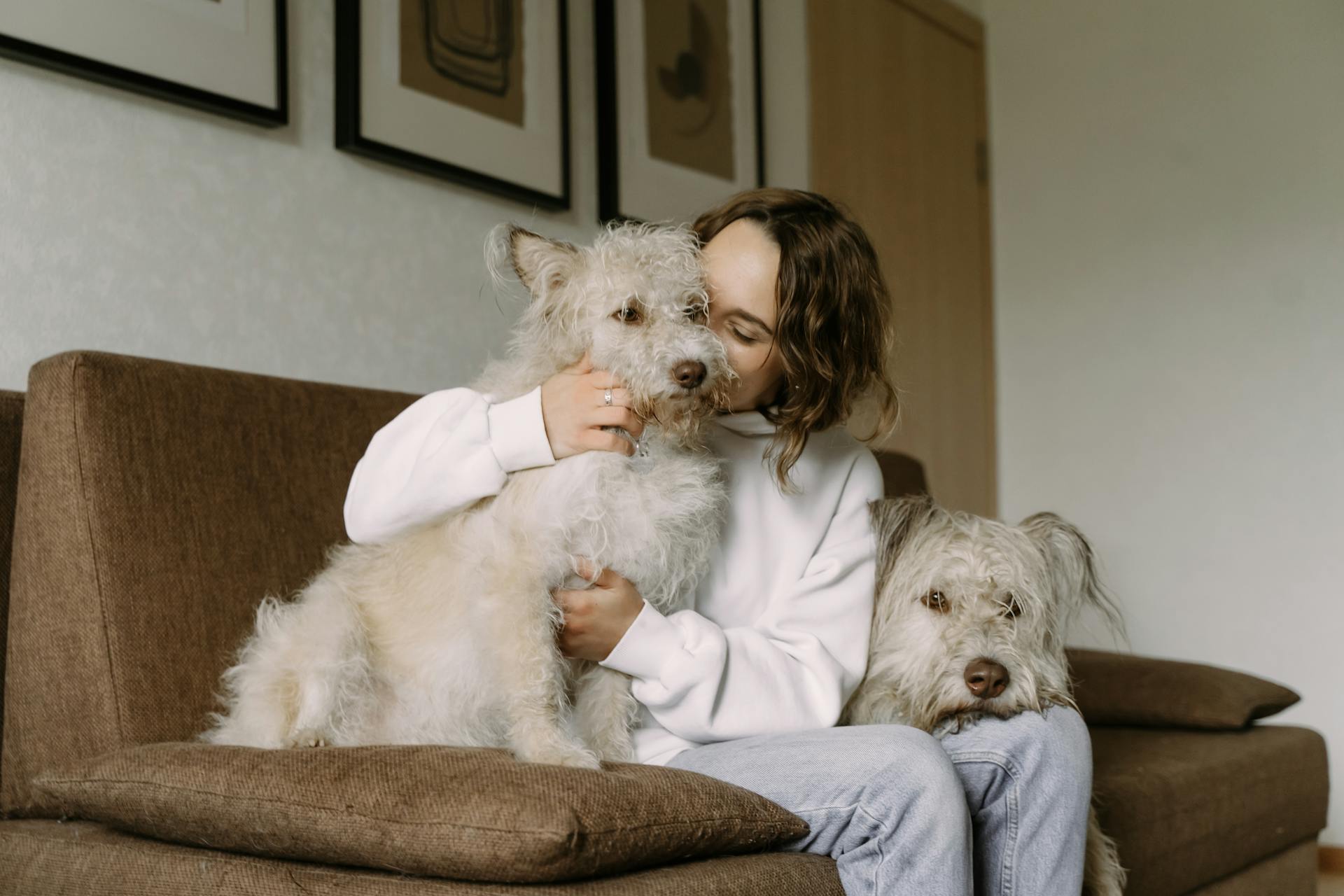
Separation anxiety in puppies and dogs can be triggered by a single traumatic event in the owner's absence, such as a house being robbed.
Some puppies are more prone to separation anxiety due to never previously being left alone. Clingy dogs may be more at risk than independent ones.
Life changes like a sudden switch in schedule, a move to a new house, or the sudden absence of a family member can also trigger separation anxiety. A divorce, a death in the family, or a child leaving for college can be particularly challenging for dogs.
A lack of daily exercise has even been pointed to as a possible cause of separation anxiety in some research.
Other Factors
Recording dog behavior using video cameras can be a useful way to diagnose and monitor separation-related disorders.
Capturing dog behavior on video can reveal subtle signs of stress and anxiety, such as pacing, panting, mouth licking, body shaking, and stereotyped behavior.

Providing constant companionship to dogs as a way of making up for absences is a common practice among dog owners.
However, research suggests that this approach may not be effective in preventing separation-related problems.
A history of being left alone for long periods or experiencing long periods without being left alone can contribute to canine separation-related problems.
Moderation is key when it comes to the length of absences from dogs.
Exercising the dog prior to a departure and avoiding punishment may not prevent separation-related anxiety, but providing a food-stuffed toy during owner absences can be a helpful strategy.
In fact, research shows that providing a food-stuffed toy is the only recommendation that was reliably followed by new dog owners.
Clear instructions are essential for improving compliance with behavioral advice.
Receiving too many instructions can actually hinder progress, with owners who received more than five instructions being less likely to report improvements in problem behavior.
Related reading: Heat and Dogs Not Eating
Signs and Symptoms
Dogs exhibiting separation anxiety can display a range of symptoms, including hyper greetings, destructive behavior, excessive salivation, drooling, or panting.
Some common signs of separation anxiety in dogs include anxious behaviors like pacing, whining, or trembling while their owner is gone or as they prepare to leave. Excessive barking or howling, destructive acts like chewing or digging, and accidents in the house are also common symptoms.
Dogs may also exhibit intense pacing, attempts to get out of their crate, and excessive drooling or panting. These behaviors can be indicative of a larger issue, and it's essential to recognize the difference between normal and abnormal behavior.
Here are some specific signs of separation anxiety in dogs:
- Hyper Greetings
- Destructive Behavior
- Excessive Salivation, Drooling, or Panting
- Anxious behaviors like pacing, whining, or trembling
- Excessive barking or howling
- Destructive acts like chewing or digging
- Accidents in the house
- Intense pacing
- Attempts to get out of his crate
Tell-Tale Signs of Hair Loss
Hyper Greetings are not exclusive to dogs, as some people may exhibit similar behavior when reunited with a loved one. If you're experiencing excessive salivation or drooling when seeing a family member or pet, it could be a sign of an underlying issue.
Intriguing read: When Are Male Dogs Ready to Mate
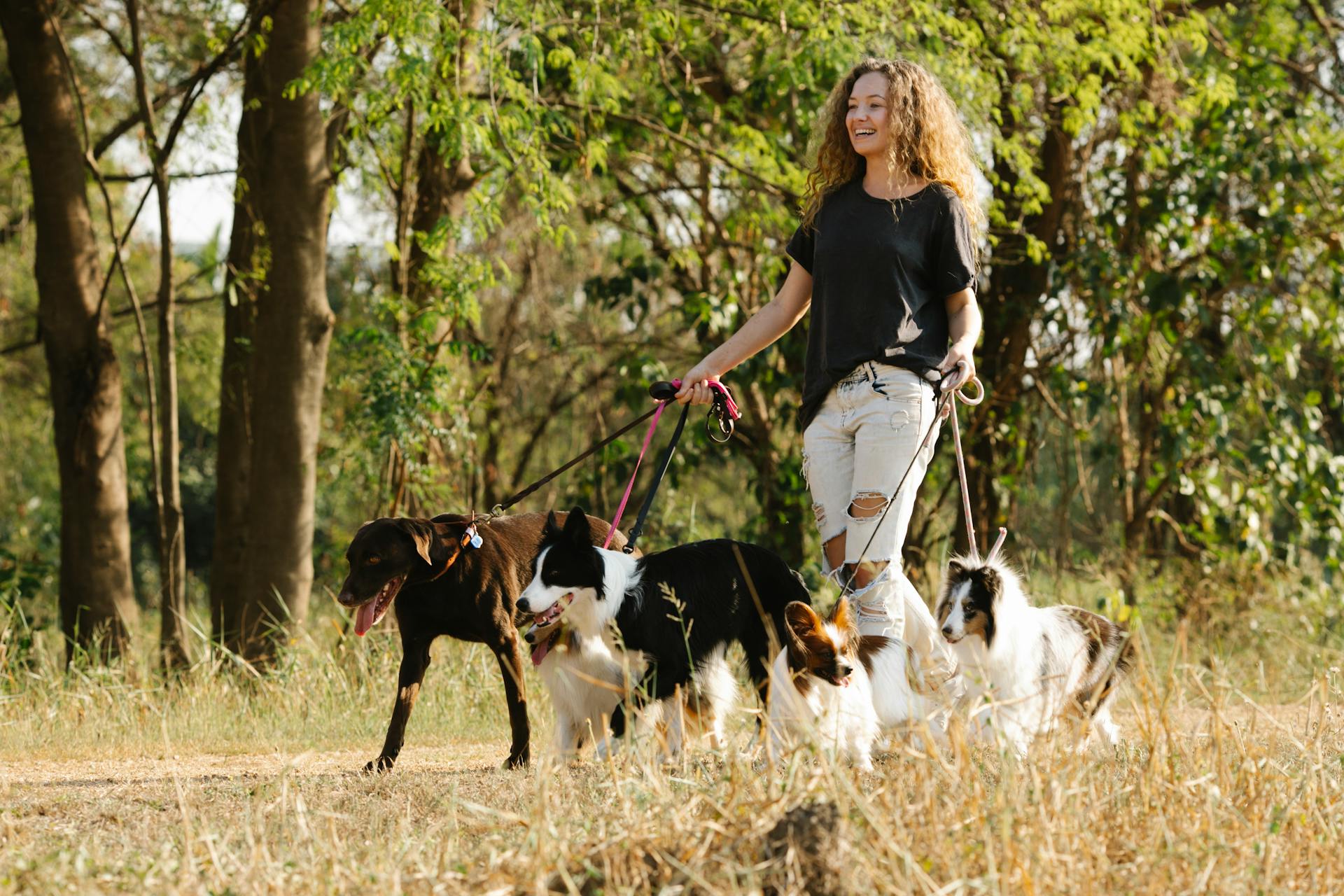
Destructive Behavior can also manifest in different ways, such as hair loss due to excessive chewing or pulling on hair. This behavior is often a result of nervous energy and can be a sign of an underlying anxiety issue.
Excessive Salivation, Drooling, or Panting can be a sign of separation anxiety in dogs, but it can also be a sign of stress or anxiety in humans. If you find yourself experiencing these symptoms when away from a loved one, it may be worth exploring the underlying cause.
Here are some common signs of hair loss:
- Excessive chewing or pulling on hair
- Excessive salivation or drooling when seeing a loved one
- Destructive behavior due to nervous energy
Signs
Dogs can exhibit stress in many ways, and it's essential to recognize the signs of separation anxiety to address the issue promptly. Hyper Greetings, where your dog becomes extremely attached to you upon your return, is a common sign.
Some dogs may engage in destructive behavior, such as chewing on shoes or destroying furniture, which can be a destructive release of nervous energy. This behavior is typically a sign of separation anxiety.

Excessive salivation, drooling, or panting can also be indicative of separation anxiety in dogs. If your dog exhibits these symptoms when you reach for your keys or upon your return, it may be a sign of a larger issue.
Here are some common signs of separation anxiety in dogs:
- Anxious behaviors like pacing, whining, or trembling while you’re gone or as you prepare to leave.
- Excessive barking or howling.
- Destructive acts, such as chewing or digging, particularly around doors or windows.
- Accidents in the house – urinating or defecating.
- Excessive salivation, drooling, or panting.
- Desperate and prolonged attempts to escape confinement, potentially ending in serious injury.
Dogs pay close attention to what you do, so you may notice a dog's signs of stress beginning while you're still at home. They recognize the actions you take when you're getting ready to leave, which can trigger anxiety.
Importance of Problems
Separation-related problems are a serious issue, affecting about 20% of the dog population. This means that many dogs are dealing with anxiety and behavioral issues when left alone.
Dogs with separation-related problems can cause significant damage to a home, including destroying drywall, tile, and insulation. They can even injure themselves in the process, like the dog who tore its tongue and broke teeth.

The reliance on indirect evidence for diagnosing separation-related problems may lead to under-reporting and under-diagnosis. This is because the problem behaviors occur primarily in the absence of the owner, making it harder to detect.
Dogs with separation-related problems are also more likely to engage in anxious behavior in response to loud noises, such as fireworks and thunderstorms. In some cases, this can be a sign of a more severe underlying issue.
In fact, dogs with separation-related problems are more likely to exhibit aggressive behavior towards their owners or strangers. They may also develop phobic or compulsive behaviors, making it even more challenging to address the issue.
Diagnosis and Treatment
Diagnosing separation anxiety in dogs can be challenging, but a video recording of the dog's behavior during a certain time can help veterinarians diagnose the problem.
The vet will examine all possible systems, including urinary, excretory, circular, nerve, and skin systems, through laboratory or imaging methods.
A combination of medication and behavior modification is often necessary to alleviate a dog's distress, and a veterinarian, veterinary behaviorist, or certified applied animal behaviorist can create a personalized plan.
Home remedies may only go so far, and more severe cases of separation anxiety require a more complex treatment plan, including consultation with your vet and the possibility of prescription medication.
Punishment is not an effective way to deal with separation-related problems, as it can increase anxious behavior in dogs and is unlikely to be temporally contingent upon the problem behavior.
How to Diagnose?
To diagnose separation anxiety in dogs, it's essential to gather accurate information about their behavior. The vet relies on the owner's information, which may not be perfectly precise or complete.
A video recording of the dog's behavior during a certain time is the best way to diagnose separation anxiety. This allows the vet to assess symptoms and make an accurate diagnosis.

Monitoring the dog's behavior while it's alone is crucial for determining the progress of treatment. This can be done by setting up a video camera or using the Barkio app, which provides both visual and audio overviews of the dog's behavior.
Separation anxiety is not the same as normal canine behavior, such as a mournful whimper when you leave the house. It's also not just about boredom or a little mischief when the dog is left alone.
To accurately diagnose separation anxiety, it's essential to rule out inadequate training. Does your dog truly understand good manners, even when you're not watching them? One of the best ways to see what's really going on is to get audio or video footage of your dog's behavior while you're away.
A unique perspective: Dogs Gums Bleeding When Chewing Toy
Differential Diagnoses
Differential Diagnoses can be a real challenge when trying to determine the cause of your dog's separation anxiety symptoms.
Attempts to escape or scratching around doors and windows might have hormonal origins, such as a female dog in heat, or could be a sign of wandering tendencies.
Howling, barking, and whining may be reactions to external stimuli like noise from construction work or people/animals moving around the house.
Urination and excremination can be caused by a range of issues, including digestive or excretory system problems, or poor hygiene habits.
Strong salivation might occur if your dog ingested something it shouldn't have, like detergent or a bitter substance, or if it has a teeth or gums illness.
Accelerated and heavy breathing can be triggered by hormones, external stimuli, or a respiratory system disease, circulatory disorder, or an illness with an infection or high temperature.
Inappetence is usually a sign of an overall illness, oral cavity illness, or digestive system illness, and can also be influenced by hormones during a female dog's heat cycle.
Self-harm can be caused by a dermatological problem, injury, or allergy, or could be a sign of boredom or a primary psychological illness.
Your vet can help rule out medical problems with a physical exam and laboratory work, discovering potential health issues like arthritis, Cushing's syndrome, dental disease, diabetes, ear infections, gastrointestinal distress, or urinary tract infections.
A fresh viewpoint: Gum Disease in Chihuahuas
Get Professional Help
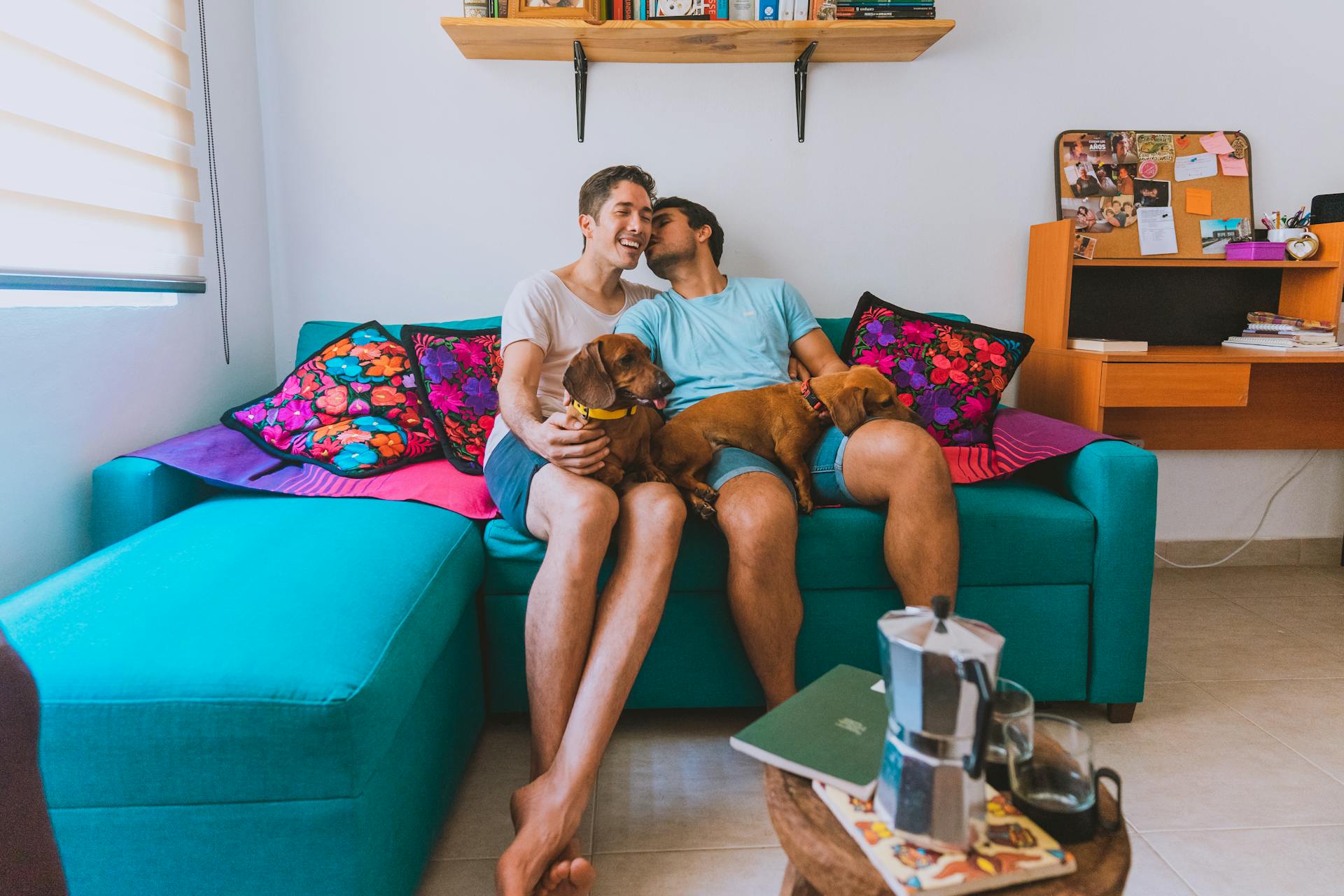
It's time to get professional help for your furry friend. Depending on your dog, you may need to explore a combination of medication and behavior modification. Speak with your veterinarian, a veterinary behaviorist, or a certified applied animal behaviorist who can create a plan to alleviate your dog's distress.
You'll want to work with a team of professionals who can help you develop a customized treatment plan. This might include a combination of medication, training, and behavior modification. It's essential to find a professional who has experience working with dogs with separation anxiety.
A veterinarian can help rule out underlying medical issues that may be contributing to your dog's separation anxiety. They can perform a physical exam and laboratory work to determine if there are any underlying health problems. Your vet can also recommend medication and supplements to help alleviate your dog's symptoms.
A veterinary behaviorist or certified applied animal behaviorist can help you develop a behavior modification plan to address your dog's separation anxiety. They can teach you how to use positive reinforcement training to help your dog cope with separation. They can also help you identify triggers and develop strategies to manage your dog's behavior.
A unique perspective: Skin Care for Dogs with Allergies
In some cases, medication may be necessary to help alleviate your dog's separation anxiety. Your vet may prescribe medication such as amitriptyline or alprazolam. However, it's essential to work with your vet to determine the best course of treatment for your dog.
Remember, every dog is different, and what works for one dog may not work for another. Be patient and work with your professional team to develop a treatment plan that meets your dog's unique needs.
On a similar theme: Do Dog Joint Supplements Work
Prevention and Management
Preventing separation anxiety in dogs is crucial to avoid its severe consequences. To do this, it's essential to get your puppy used to solitude gradually.
Leaving a puppy in a safe environment with toys and a filling treat can help them feel more secure when you're away. A short, calm greeting when you leave and return home can also make the experience less stressful.
The dramatic departure can make dogs feel anxious, so it's best to leave the house without excessive petting. This applies to both leaving and returning home.
A unique perspective: Puppy Strangles before and after
Monitoring your puppy's behavior while they're alone is vital to catch any signs of stress or fear. You can use an app like theBarkiophone to track their behavior and make adjustments accordingly.
Keeping your puppy active and entertained can also prevent separation anxiety. Engaging in activities like canicross can direct their energy and mental focus away from escape attempts or destructive behavior.
Desensitizing your puppy to your departure routine can make it less distressing. Start by leaving them for short periods and gradually increase the time. You can also use high-value treats to associate your departure with positive experiences.
Tossing your puppy a treat right before you leave can help them look forward to your departure. Similarly, desensitizing them to the signs of your departure, such as picking up keys or putting on a coat, can make it less stressful.
On a similar theme: Puppy Strangles Long Term Effects
Treatment Options
Adding another dog to the household may help dogs with separation-related behavior problems, but evidence suggests this doesn't prevent another dog from developing separation-related problems.
Confining a dog to a crate while at home alone is unlikely to prevent separation-related problem behaviors and can even increase stress-related behaviors like lip licking.
Punishment is best avoided when dealing with dogs with separation-related problems, as high frequencies of punishment are associated with anxious behavior in small dogs and positive reinforcement is more effective.
A more complex treatment plan, including consultation with your vet, is often necessary for more severe cases of separation anxiety, which may involve prescription medication.
Frequently Asked Questions
What happens if separation anxiety is left untreated dogs?
Untreated separation anxiety in dogs can lead to worsening symptoms and increased aggression. If left unaddressed, it may also manifest as a sign of underlying health issues
How long can you leave a dog with separation anxiety?
Leave your dog with separation anxiety for as little time as possible, ideally under 1 hour, to minimize anxiety and stress. Prolonged alone time can exacerbate their condition, so explore alternative solutions like dog sitters or companions
Sources
- https://www.miznerbioscience.com/top-4-dog-breeds-most-likely-to-suffer-from-separation-anxiety/
- https://www.akc.org/expert-advice/training/dog-separation-anxiety/
- https://barkio.com/en/dog-separation-anxiety-guide
- https://www.ncbi.nlm.nih.gov/pmc/articles/PMC7521022/
- https://www.dailypaws.com/dogs-puppies/dog-behavior/common-dog-behaviors/separation-anxiety-in-dogs
Featured Images: pexels.com
